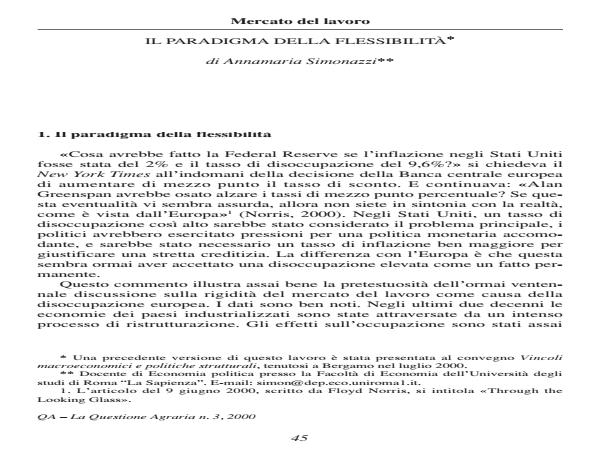Il paradigma della flessibilità
Journal title QA Rivista dell’Associazione Rossi-Doria
Author/s Annamaria Simonazzi
Publishing Year 1 Issue 2000/3
Language Italian Pages 15 P. File size 67 KB
DOI
DOI is like a bar code for intellectual property: to have more infomation
click here
Below, you can see the article first page
If you want to buy this article in PDF format, you can do it, following the instructions to buy download credits

FrancoAngeli is member of Publishers International Linking Association, Inc (PILA), a not-for-profit association which run the CrossRef service enabling links to and from online scholarly content.
The Flexibility Paradigm - Since the end of the 1970s economic performance has diverged widely among industrial countries. Explanations offered for the high unemployment rates experienced throughout Europe in the 1980s and 1990s, as compared with the "employment miracle" of the US, have been couched in terms of the flexibility paradigm. In the first section of the paper it is argued that the various versions of this explanation cannot account for the characteristics of European unemployment. The second section seeks to provide an alternative explanation for the decade of growth experienced by the US economy, arguing against the hypothesis that there is a trade-off between employment and inequality and in favour of separate explanations for the growth of employment and the dramatic increase in earnings inequality. The conclusion is that, if the increase in inequality is not a necessary consequence of technological progress, then an option remains open for a European model of growth and equity.
Annamaria Simonazzi, Il paradigma della flessibilità in "QA Rivista dell’Associazione Rossi-Doria" 3/2000, pp , DOI: